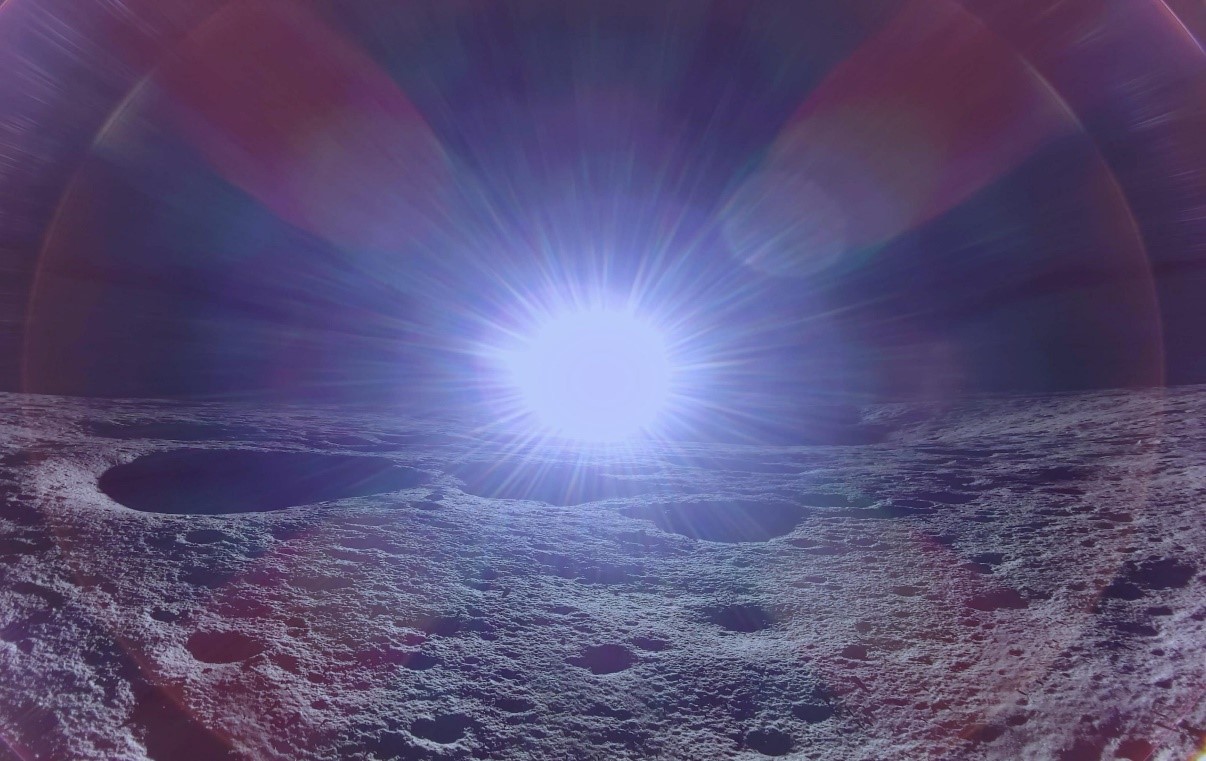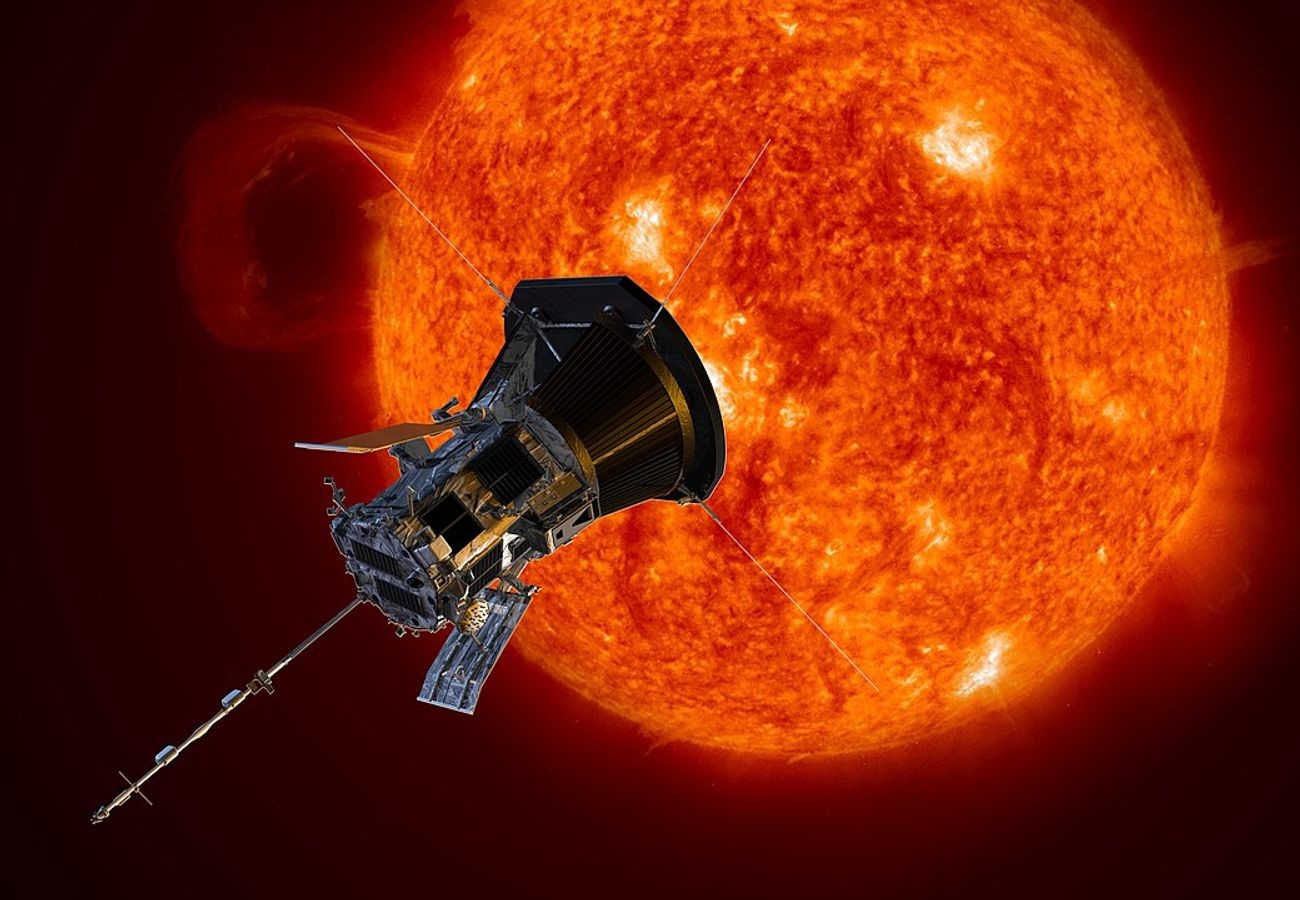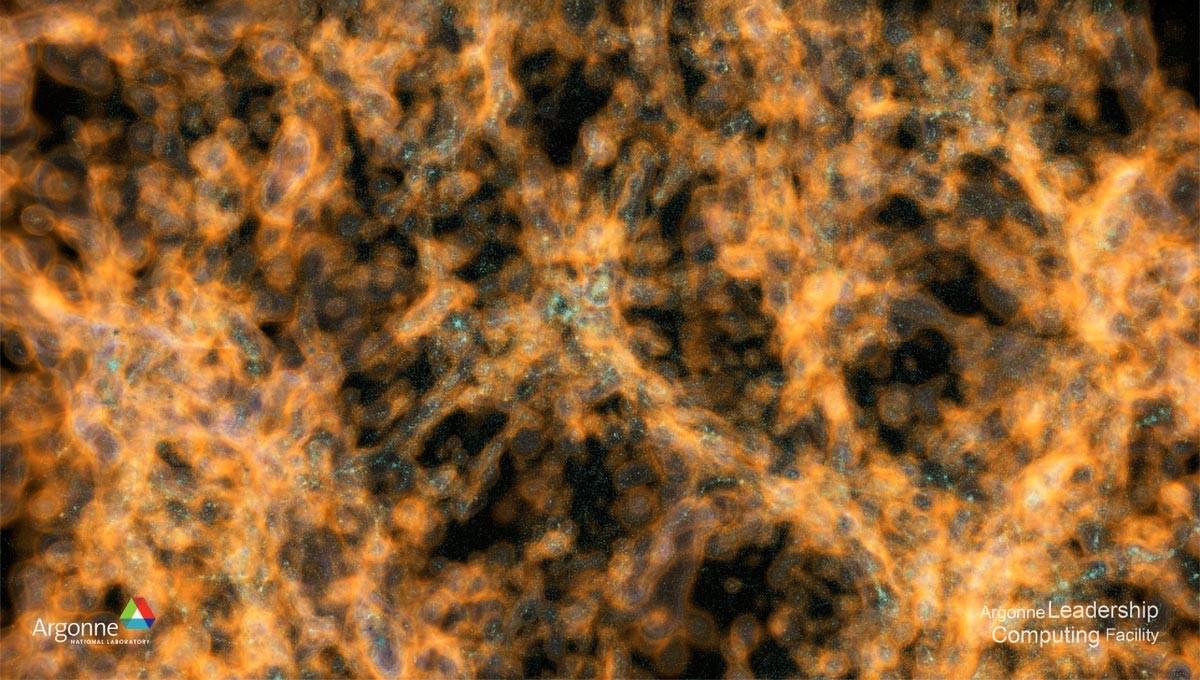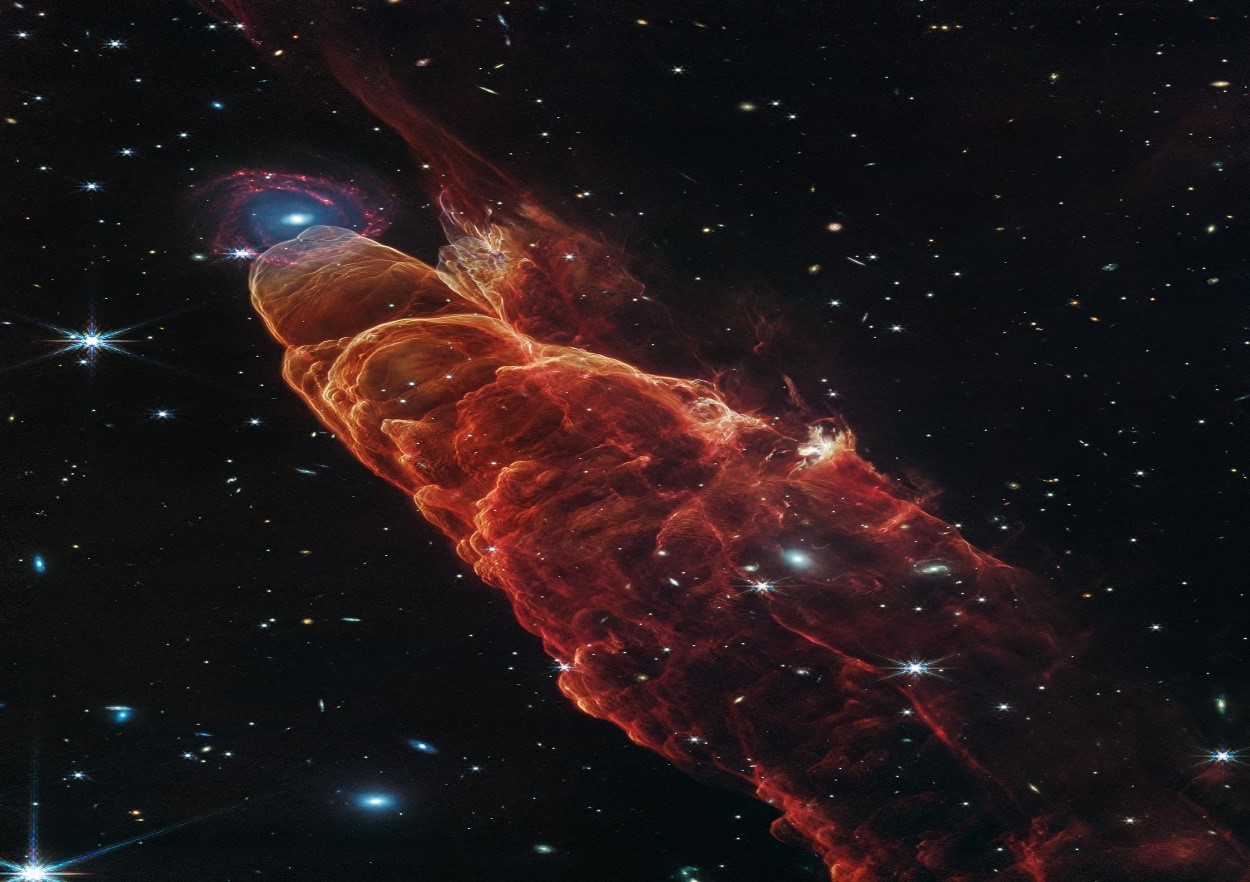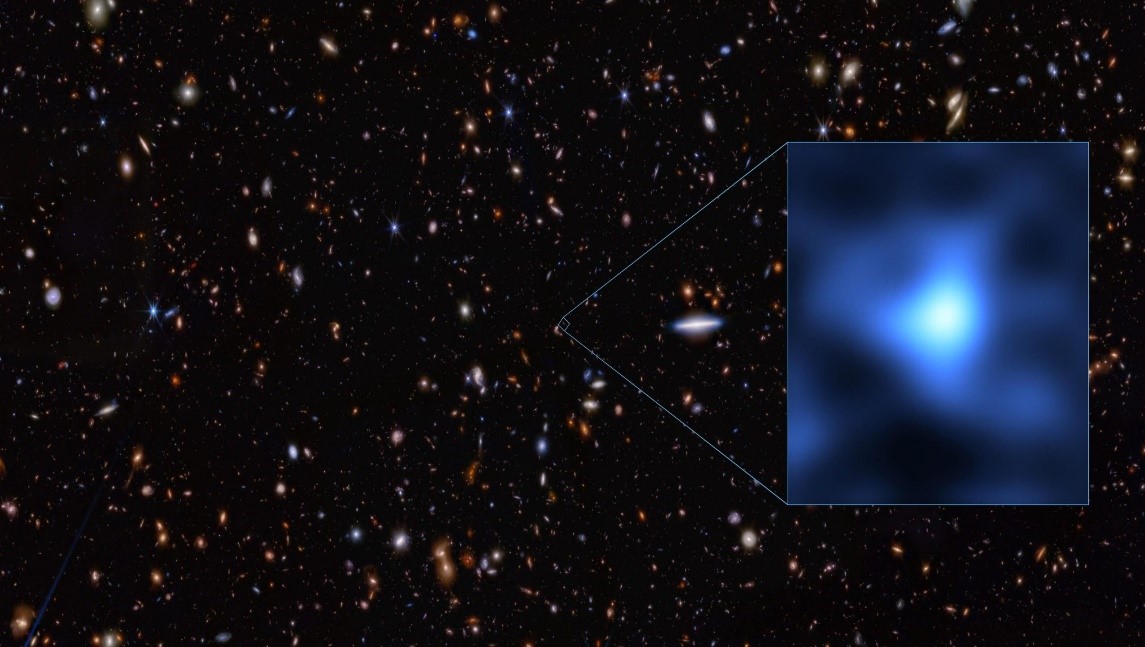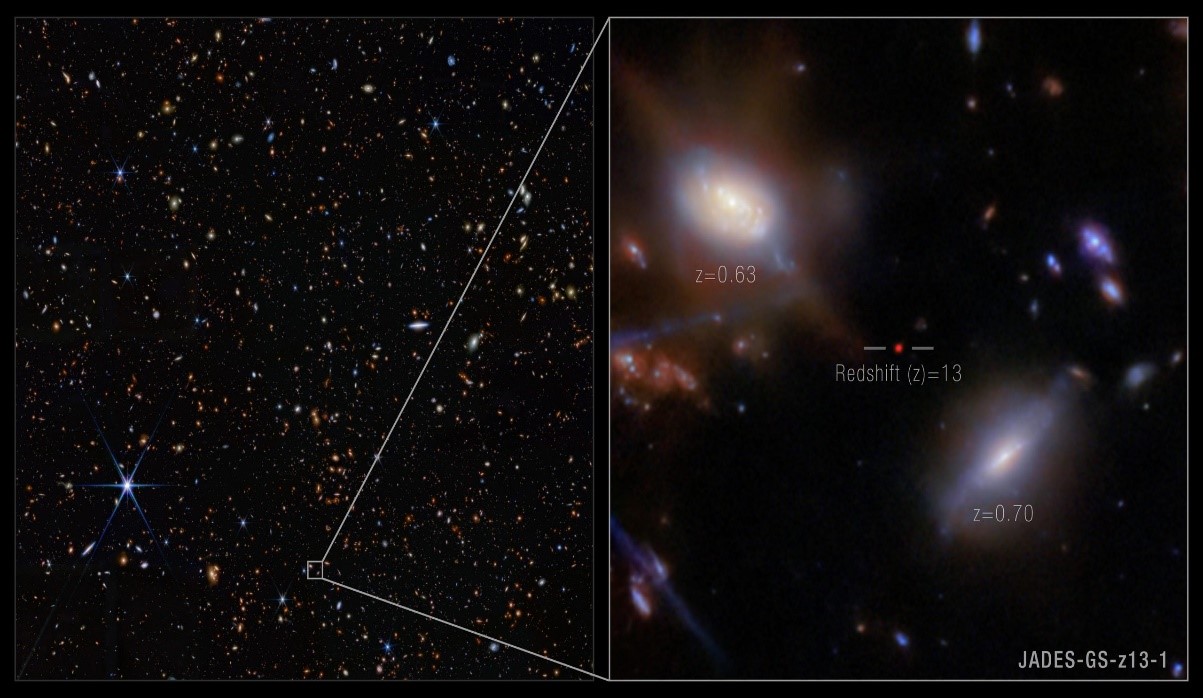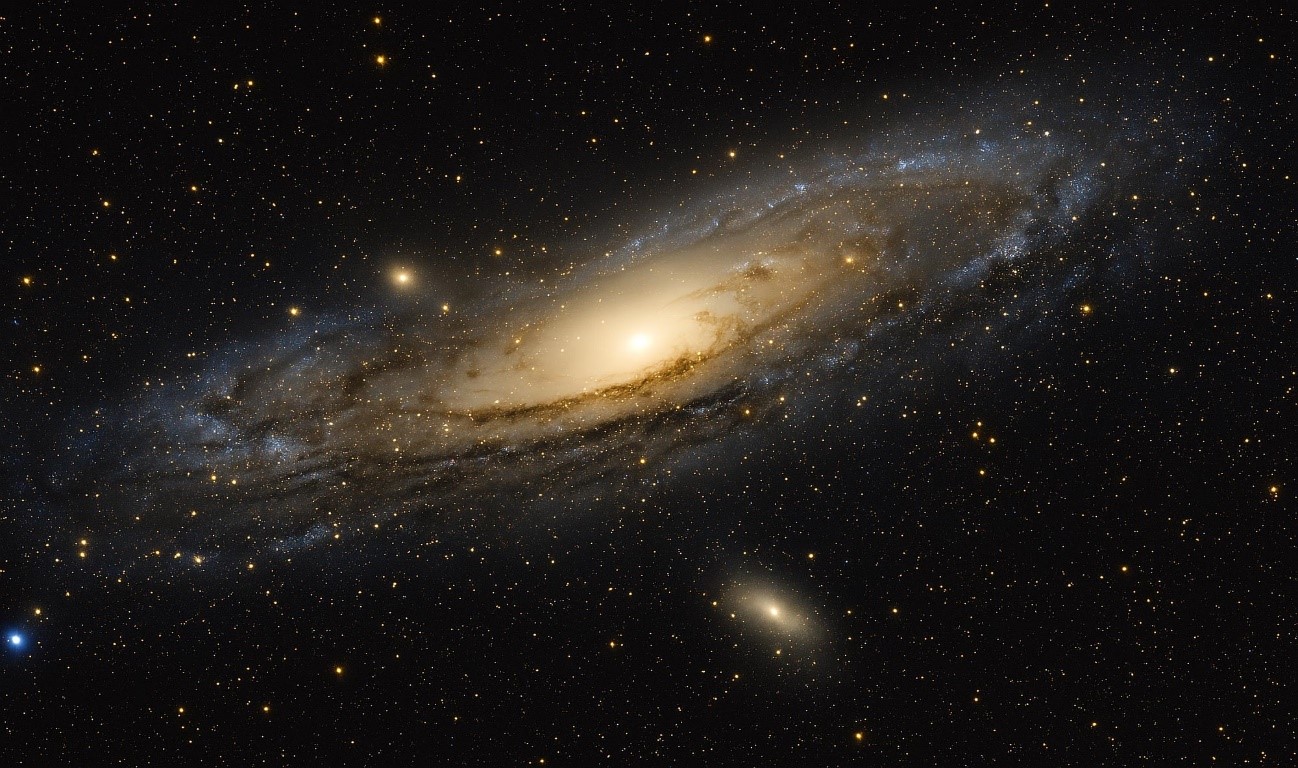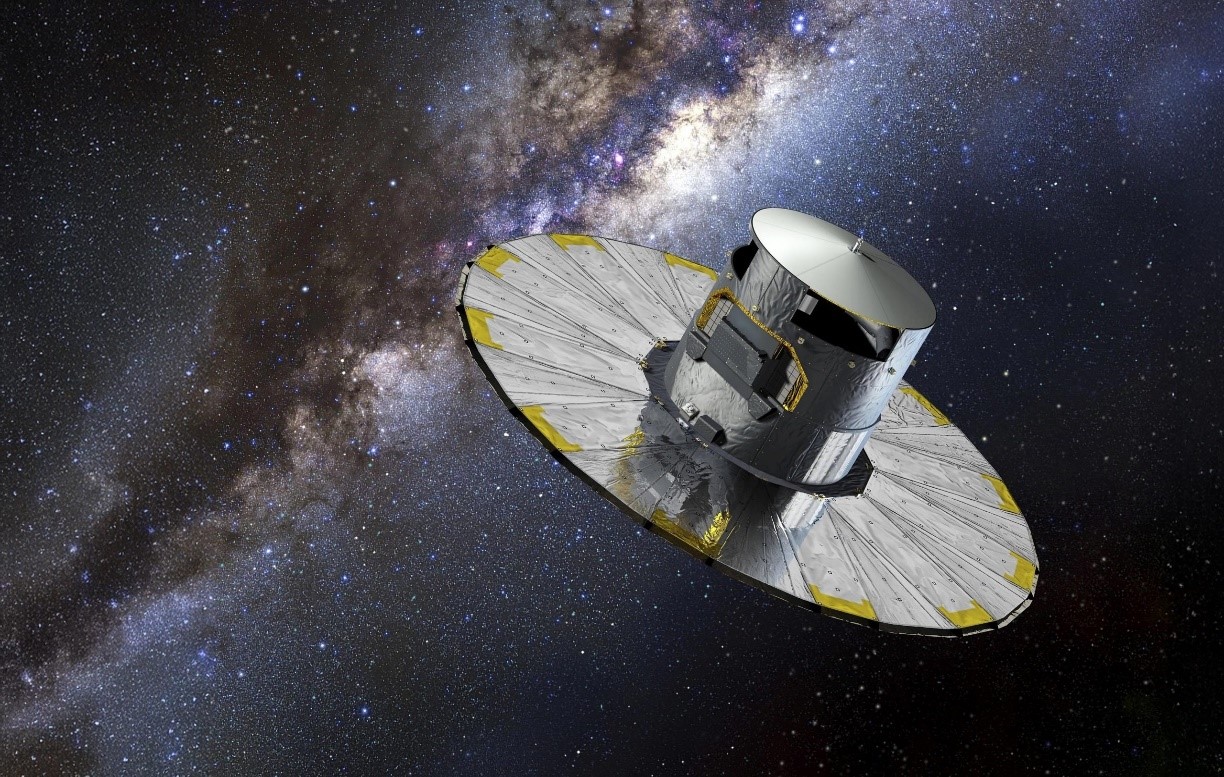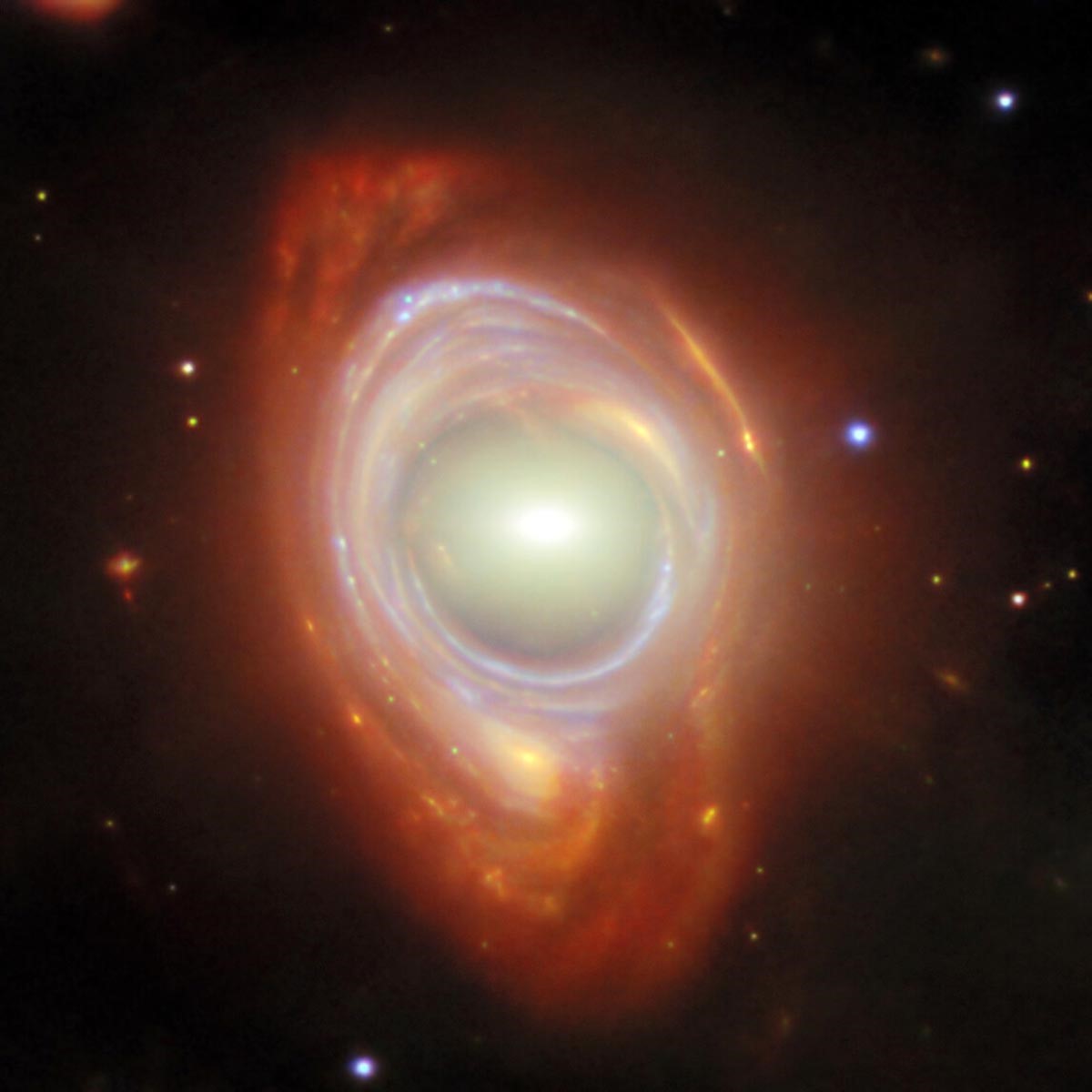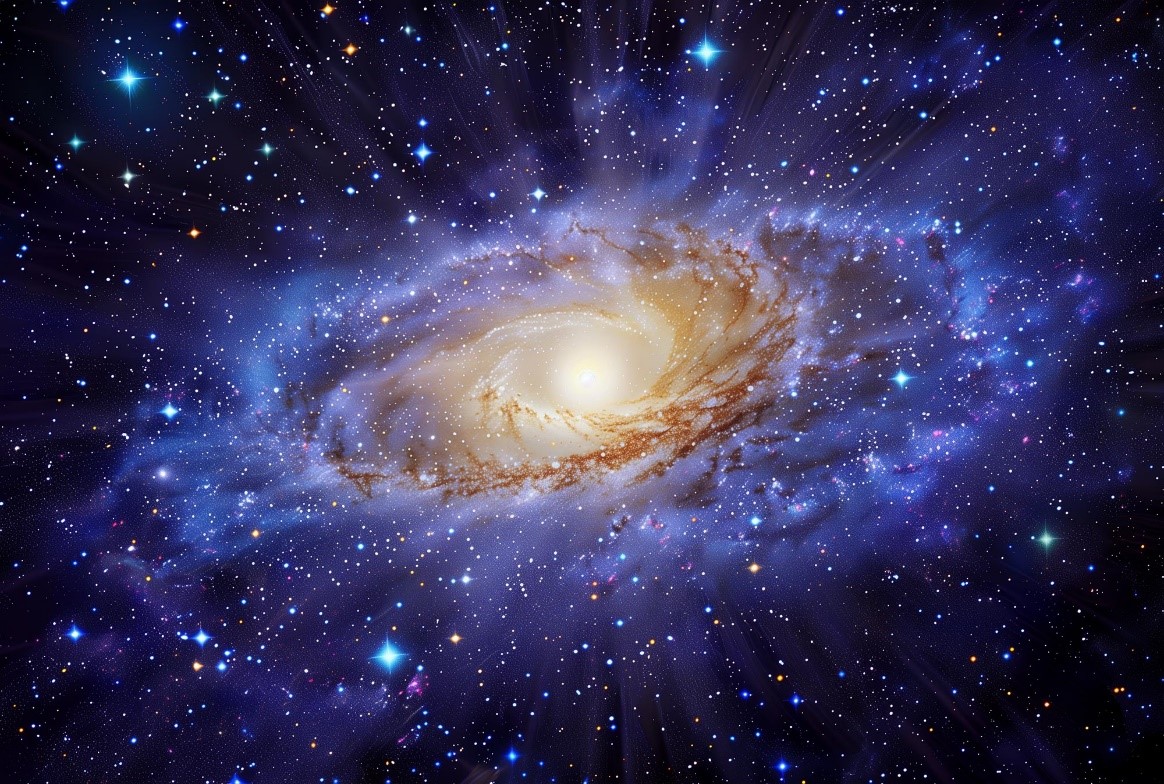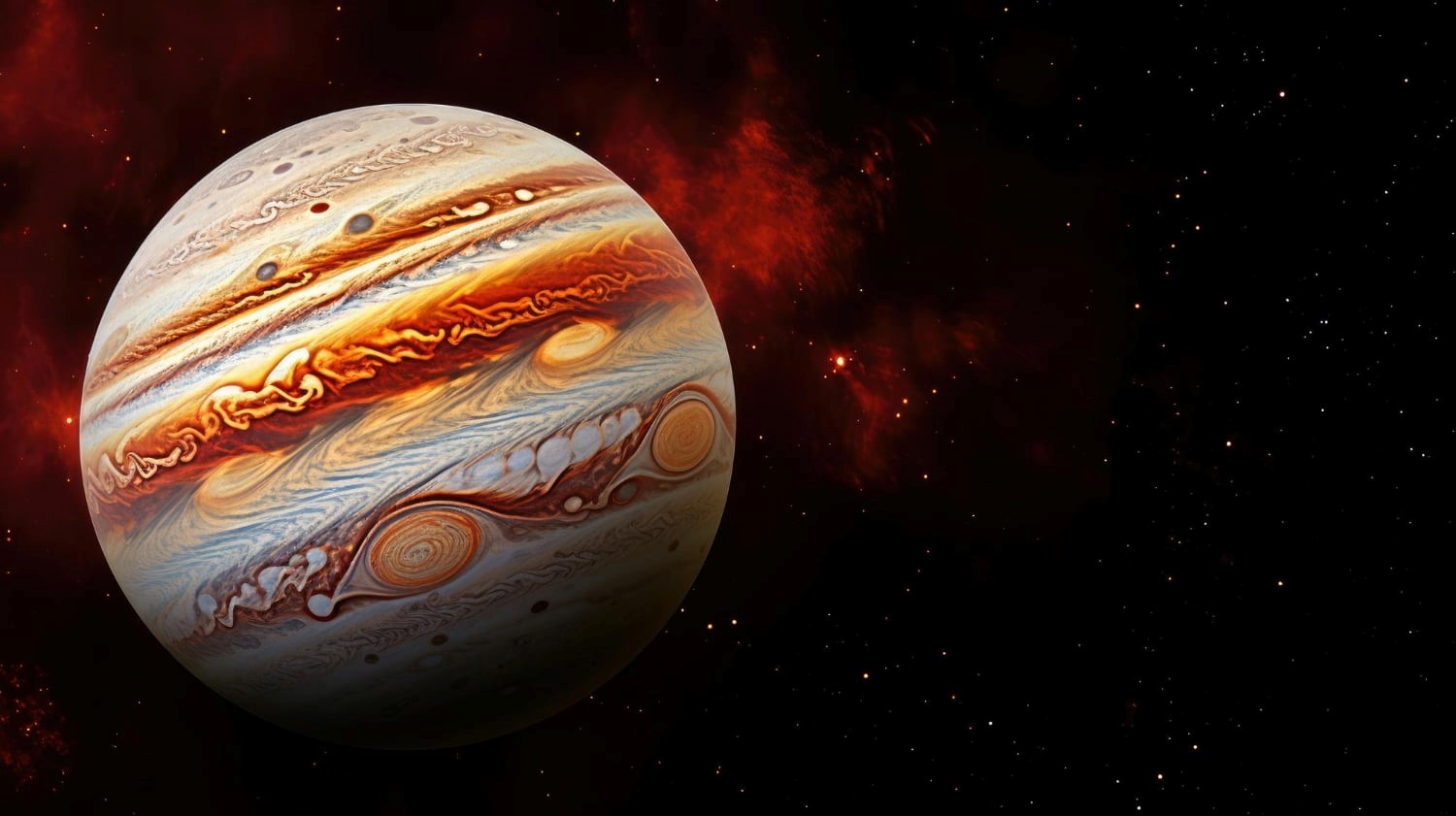Colossal Black Hole Jets in a Spiral Galaxy May Predict the Milky Way’s Future
Astronomers have discovered a spiral galaxy nearly a billion light-years away with a supermassive black hole ejecting massive jets of energy—an event once believed to occur only in elliptical galaxies. This finding challenges existing models of galaxy evolution and suggests that the Milky Way could one day experience a similar phenomenon, potentially threatening life on Earth. Remarkably, this galaxy, three times the size of the Milky Way, remains structurally intact despite immense forces. It also offers new insights into dark matter and cosmic evolution, reshaping our understanding of the universe.
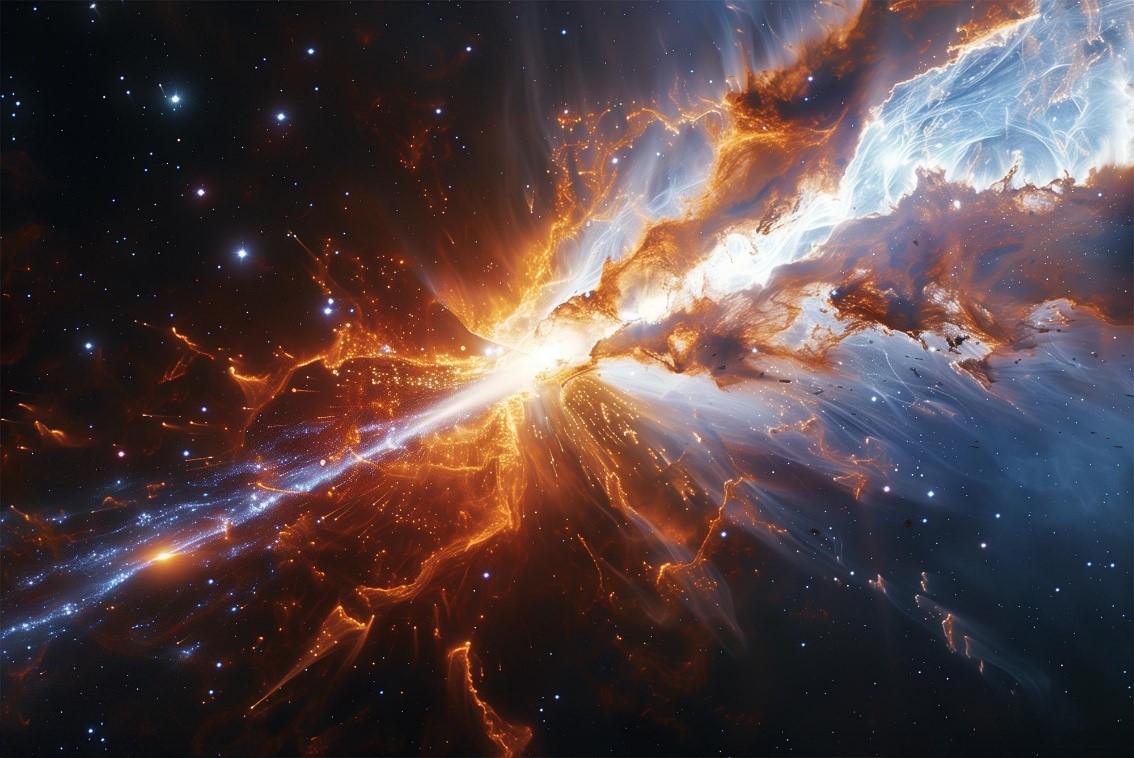
Figure 1. Colossal Spiral Galaxy with Powerful Jets Challenges Galactic Evolution
A Surprising Cosmic Giant
A startling glimpse into a possible future for the Milky Way has emerged with the discovery of a cosmic anomaly that defies our understanding of the universe. Figure 1 shows Colossal Spiral Galaxy with Powerful Jets Challenges Galactic Evolution.
An international team of astronomers from CHRIST University, Bangalore, has identified a massive spiral galaxy nearly a billion light-years away, housing a supermassive black hole billions of times the Sun’s mass [1]. This black hole powers enormous radio jets extending six million light-years across.
This is one of the largest known jets in any spiral galaxy, challenging conventional theories of galaxy evolution, as such powerful jets are typically found in elliptical galaxies, not spirals.
The discovery also raises the possibility that the Milky Way could one day generate similar energetic jets. The resulting cosmic rays, gamma rays, and X-rays could significantly increase radiation levels, potentially disrupting our solar system and triggering a mass extinction on Earth.
Rethinking Galaxy Evolution
Lead author Professor Joydeep Bagchi of CHRIST University, Bangalore, emphasizes that this discovery is more than a curiosity—it challenges our understanding of galaxy evolution and the role of supermassive black holes in shaping their environments.
"If a spiral galaxy can not only endure but flourish under such extreme conditions, what does this imply for the future of galaxies like the Milky Way?" he asks. "Could our own galaxy eventually experience similar high-energy events with profound consequences for life?"
A Unique Galactic Phenomenon
In a study published in Monthly Notices of the Royal Astronomical Society, researchers analyzed the structure and evolution of the massive spiral galaxy 2MASX J23453268−0449256, which is three times the size of the Milky Way.
Using data from the Hubble Space Telescope, the Giant Metrewave Radio Telescope, the Atacama Large Millimeter Array, and multi-wavelength analyses, they identified an enormous supermassive black hole at its core and detected some of the largest known radio jets in any spiral galaxy. This challenges the traditional belief that such powerful jets would disrupt a spiral galaxy’s delicate structure.
Challenging Expectations
Despite expectations, 2MASX J23453268−0449256 has maintained its serene structure, featuring well-defined spiral arms, a luminous nuclear bar, and an undisturbed stellar ring—all while harboring one of the most extreme black holes ever observed in a spiral galaxy.
Adding to the mystery, the galaxy is enveloped by a vast halo of hot, X-ray-emitting gas, offering clues about its past. While this halo gradually cools, the black hole’s jets function as a cosmic furnace, preventing new star formation despite the presence of ample star-forming material.
Comparing to the Milky Way
The Milky Way’s central black hole, Sagittarius A* (Sgr A*), has a mass of 4 million Suns but remains in a quiet, dormant state.
However, researchers suggest this could change if Sgr A* were to accrete a gas cloud, star, or even a small dwarf galaxy, potentially triggering powerful jet activity. These events, known as Tidal Disruption Events (TDEs), have been observed in other galaxies but not yet in the Milky Way.
If such jets were to emerge from Sgr A*, their impact would depend on their strength, direction, and energy output.
A Possible Risk to Earth
A jet aimed near our solar system could strip away planetary atmospheres, damage DNA, and increase mutation rates due to radiation exposure [2]. If Earth were directly or closely hit, it could degrade the ozone layer, potentially leading to mass extinction.
Another possibility is that a powerful jet could alter the interstellar medium, affecting star formation in certain regions—similar to what has been observed in the galaxy studied in the new research.
Astronomers believe the Milky Way likely produced large-scale radio jets in the past and could do so again, but the timing remains uncertain due to various influencing factors.
Insights into Dark Matter
Researchers found that J23453268−0449256 contains ten times more dark matter than the Milky Way, playing a crucial role in stabilizing its rapidly spinning disc.
Their study reveals a unique balance between dark matter, black hole activity, and galactic structure, opening new avenues in astrophysics and cosmology.
“Studying these rare galaxies could provide key insights into the forces shaping the universe—including the nature of dark matter, the fate of galaxies, and even the origins of life,” said co-author Shankar Ray, a PhD student at CHRIST University, Bangalore.
This discovery brings scientists closer to unraveling cosmic mysteries, proving that the universe still holds astonishing surprises.
Reference:
- https://scitechdaily.com/monster-black-hole-jets-in-a-spiral-galaxy-could-forecast-the-milky-ways-frightening-future/
- https://www.space.com/the-universe/what-would-happen-if-the-milky-ways-black-hole-erupted-this-distant-galaxy-paints-a-terrifying-picture
Cite this article:
Janani R (2025), Colossal Black Hole Jets in a Spiral Galaxy May Predict the Milky Way’s Future, AnaTechMaz, pp.292


